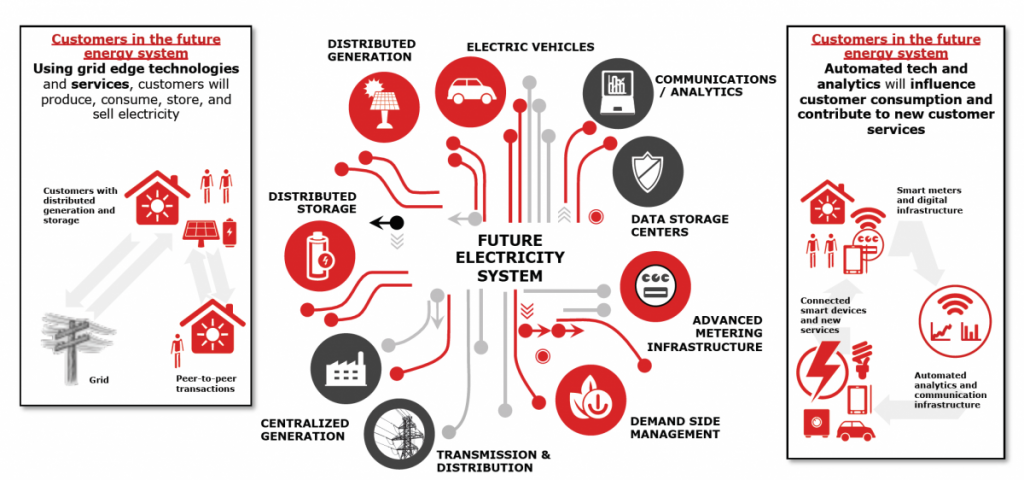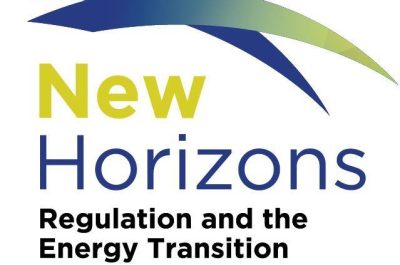Controlled Chaos: why the grid of the future will need new standards
Customer choices are driving a distributed energy revolution in Australia – but how would an electricity system with up to 10 million distributed energy resources (DER) actually work in the long term? How will system operators avoid chaotic threats to power quality and reliability or choking off new connections in constrained parts of the network?
New standards and communication protocols will be vital to ensuring tomorrow’s grid is not only a platform – but an open platform. With increasingly granular data and communications, Australia’s power industry can transition to a multidirectional ecosystem for value exchange, much more like telecommunications.
New technologies will need to work together
Interoperability is the ability of different information technology systems and software applications to communicate, use, and exchange data accurately, effectively, and consistently. We rely on interoperability in telecommunications and in our internet protocols. We don’t worry when buying a mobile phone whether the manufacturer’s device will work on our 3G network. We no longer need to concern ourselves whether a connection is placed through a mobile cellular network, a landline or a Voice over Internet Protocol (VoIP) connection.
Until the late 20th century, the telecommunications industry, operated through a top-down, vertically integrated architecture controlled by a single monopoly player. As technology advanced, regulators fielded complaints that end users were unable to connect customer owned equipment (such as, new low-cost devices such as “modems”) because of concerns about impacts on the network integrity. Today’s mobile and internet systems in Australia (and around the world) are likely to have been undermined without support for open access for network equipment.
As the Electricity Network Transformation Roadmap highlighted recently, to fully unlock the value of distributed energy resources will require a new power system architecture, including more active network management of ‘hosting capacity’ and distribution operations enabled by the interoperability of new distributed energy resources.[1]
A new platform for new markets
Internationally, market reformers are enunciating clear principles of neutrality which should be the bedrock of electricity networks as ‘platform providers’. The new paradigm relies on independent actors with confidence that the platform is as neutral as possible to avoid barriers to animation of new markets.[2] The McKinsey Institute suggests the following key principles of neutrality by networks[3]:
- Empower the consumer while maintaining universal access to safe, reliable electricity at reasonable cost;
- Establish and maintain the communal infrastructure;
- Align risks and rewards across the industry;
- Create a transparent, level playing field; and,
- Foster open access to the grid.
Far from seeking to control, or dictate, the future uses of the grid, platform participants will rely on standards to enable the flexibility, resilience and scalability of the network to meet future needs.[4]

Figure 1. The future energy system will need to provide additional roles for the grid and incorporate many customer technologies[5]
Open standards in California
Today, much of the equipment built for the electricity system relies on proprietary technologies developed through the investment and risk of individual manufacturers. In many cases, industrial controls systems, components and devices work smoothly with the manufacturer’s own equipment but their interface or integration with other technologies is more challenging. Few products come with the guaranteed dominance of a ‘category killer’ however. Increasingly, suppliers are recognising the risks of relying on closed, proprietary systems in a dynamic market. Interoperability and connectivity is increasingly a valued design feature.
The Smart Grid Interoperability Panel (SGIP) has identified the ability for poor interoperability to make distributed energy resource integration more complex and expensive. One typical example is securing a coordinated response from rooftop solar-connected smart inverters, on-site batteries, and grid-side voltage regulators to lower solar output when clouds pass overhead.[6] A timely response can be impractical if each device has to communicate with a utility control centre for processing and control instructions. However, in an interoperable world, distributed hardware with communication capability linked to these devices can collect and analyse data, make decisions, and send commands quickly enough to solve the problem.
The use of open standards for this kind of work is important to managing the system in near real-time. An example of where a successful trial of open standards is being utilised to enhance system interoperability is the California Rule 21.

California was the first state to implement a ruling on smart inverters under California Rule 21. Concerned about the impact that growing distributed energy resources penetration would have on system reliability, utility engineers (among others) advised the California Public Utilities Commission of the need for devices that could help the utility manage the growing penetration of distributed energy resources.[7] In this example, industry-developed standards played an essential role, informed by diverse stakeholder collaboration.
Australian utilities have an opportunity to also work with key stakeholders and Standards Australia to ensure that interoperability standards are developed and implemented in a timely way.
What are open standards and why does Australia need them?
Open standards and communication protocols have the benefit of achieving shared outcomes while retaining the flexibility to allow interactive, especially for open source developers. They are key to allowing devices, services, and applications to work together across diverse “network of networks”. They also have freely accessible specifications, are unencumbered, have open development and are continuously evolving. [8]
When considering the development of open standards and protocols, the focus should be on three primary issues:
- Agreement on the goal: For example; the SGIP initiated the Open Field Message Bus (OpenFMB) standards, recruited other utility partners to assist and facilitate the creation of an Internet of Things (IoT) ecosystem for utilities. The OpenFMB is being designed to provide a common interface for grid devices and target new applications that enable interoperability on the utility side of the meter. The OpenFMB, was launched in February at DistribuTECH, with a fast-tracked approach to getting standards in place.[9]
- Ensuring that they reflect the best architectural choices: Open standards, rather than a series of private ones, are necessary to facilitate genuine interconnectedness. An example is the Coalition of the Willing (COW) 1 project in North America, led by Duke Energy with diverse supply chain participants. The project used a “communications node” and standards-based messaging architecture to enable peer-to-peer communications to integrate data from different vendors’ systems. The Field Message Bus (FMB) provided an open standard-based, common logical publish/subscribe interface connecting multiple disparate grid devices, telecom networks, and information systems.[10]
- Creation of a “test bed” where open source systems can be designed and perfected: While the first two needs are best handled by industry, experimental ‘test beds’ may need to be enabled in regulatory frameworks, involving Australia’s institutions like AEMO and the AER. For example, in North America the SGIP team is developing a catalogue of different smart grid test beds. It’s conducting surveys of test bed leads to gather information on the type and level of testing, the equipment in place, collaborative processes, costs for participation, simulation capabilities and other details.
The benefits that systems built on open standards provide include[11]:
- Coordinated decentralised optimisation where the volume of local data overwhelms the capability to transfer the data back to central control systems and SCADA;
- Low latency (i.e. delay in communications) for situations where centralized sites are too far away to respond promptly;
- Resiliency when portions of the grid are segmented;
- Open, observable, and auditable interfaces at multiple scales of interoperability;
- Interoperability with existing plant and without having to replace or undertake costly augmentations of the system; and,
- Unified design for reduced operational expenditure, simplified management and enhanced security.
A plan for the future
To aid the development of open standards and protocols for the Australian Electricity System, Standards Australia released its Roadmap for Standards and the Future of Distributed Electricity in May 2017. As an input into Electricity Network Transformation Roadmap it will help shape the development of standards to support the transition of electricity networks and technological advances related to electricity distribution and consumption.
The report has identified the need to engage internationally, specifically with a number of Systems Committees, System Evaluation Groups and Technical Committees at the International Electrotechnical Commission (IEC). By aligning with the IEC it will help guide technical committees to address the real need of keeping standards open, technology neutral, encourage interoperability and consider privacy.[12]
The report found that:
- The standards framework for the future of distributed electricity should support innovation in product, system and network renewal while maintaining appropriate levels of safety, system security and reliability;
- Interoperability and harmonisation of solutions should be managed by way of an overarching plan, rather than through vertical development; and,
- Emerging themes like energy and data security must also be managed at both a technical and policy level to ensure the viability of the grid as it transforms.
Developing standards that are more open and better aligned with international standards will be vital to unlock the full value of Australia’s distributed energy resources. This report provides a clear plan for providing a standards framework that supports innovation while maintaining safety, reliability and system security. A copy of the Standards Australia Roadmap for Standards and the Future of Distributed Electricity can be found here.
[1] CSIRO and Energy Networks Australia 2017, Electricity Network Transformation Roadmap: Final Report.
[2] Never mind the question – what’s the answer? Dr Stuart Sharrock, May 2013: http://telecomworld.itu.int/blog/never-mind-the-question-whats-the-answer/
[3] McKinsey Global Institute, The Internet of Things: Unmapping the Value Beyond the Hype, McKinsey & Company, June 2015.
[4] Duke Energy, “Leading Advancements in Interoperability: Open Field Message Bus (OpenFMB™) Interoperability Framework with a Microgrid Implementation.” In partnership with Coalition of the Willing (COW – II) partners, January 16, 2016
[5] Standards and Interoperability in the Electric Distribution System, ICF October 2016.
[6] Smart Grid Interoperability Panel, “Enabling and Accelerating Grid Modernization through the Internet of Things (IoT),” EnergyIoT™: Accelerating Grid Modernization.
[7] SIWG, “Recommendations for Updating the Technical Requirements for Inverters in Distributed Energy Resources,” December 2013.
[8] What are open standards? Opensource.com : https://opensource.com/resources/what-are-open-standards
[9] Green Ovations | Unlocking the grid edge: Open Standards are closer than you think, Stuart McCafferty, 2017: http://www.electricenergyonline.com/show_article.php?mag=106&article=865
[10] Smart grid multi-vendor interoperability based on open standards and open source, February 2015: http://geospatial.blogs.com/geospatial/2015/02/smart-grid-multi-vendor-interoperability-based-on-open-standards-and-open-source.html
[11] Green Ovations | Unlocking the grid edge: Open Standards are closer than you think, Stuart McCafferty, 2017: http://www.electricenergyonline.com/show_article.php?mag=106&article=865
[12] Standards Australia. Roadmap for Standards and the Future of Distributed Electricity, May 2017
